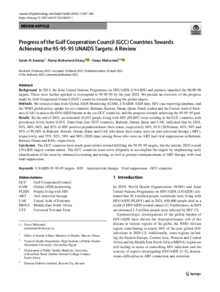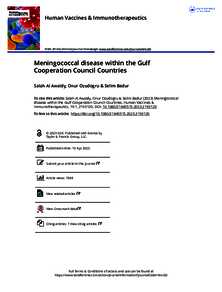وثيقة
Assessment of safe injection practices in health facilities in Oman.
المعرف
DOI: 10.26719/2018.24.4.351
المصدر
Eastern Mediterranean Health Journal. v. 24, 4, p. 351-359
المساهمون
الدولة
Switzerland
الناشر
World Health Organization.
ميلادي
2018-04-01
اللغة
الأنجليزية
الموضوع
الملخص الإنجليزي
Background: Unsafe injection practices put patients and providers at risk of infectious and noninfectious adverse events. A 2001 Ministry of Health survey on injection practices in Oman indicated that, while overall standards were good, in some areas there was a need for improvement. Aim: We aimed to evaluate injection safety practices to determine whether facilities meet the requirements for practices, equipment, supplies and waste disposal, and to identify unsafe practices. Methods: We conducted a national cross-sectional survey in 2007 using the World Health Organization tool to evaluate injection safety practices. Using 2-stage cluster sampling, 80 government and 61 private health facilities were randomly selected and evaluated. Results: There was no shortage of injection equipment nor evidence of attempts to sterilize disposable devices. Care providers immediately disposed of the used needle/syringe in sharps containers. Phlebotomy devices were taken from sealed packets in 96% of facilities. In private facilities, 66.3% of the care providers were fully immunized against hepatitis B. Wearing a new pair of gloves for phlebotomy was observed in only 46% of government and 38% of private health facilities. Many health facilities lacked alcohol-based handrub. Conclusions: Many injection safety aspects were satisfactory. However there are still opportunities for improvement. Actions are required to make alcohol-based handrub and appropriate sharps containers available and to provide hepatitis B vaccine and training to health care workers in all facilities.
ISSN
1020-3397
URL المصدر
قالب العنصر
مقالات الدوريات


